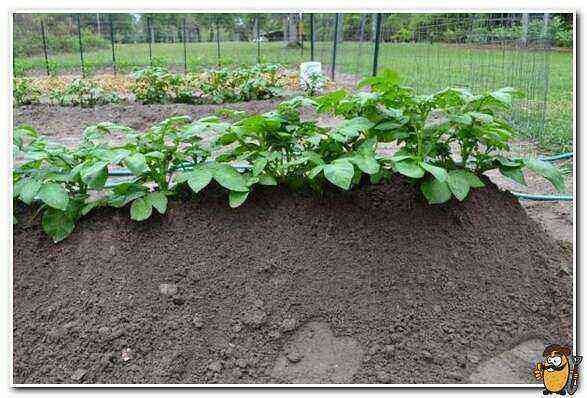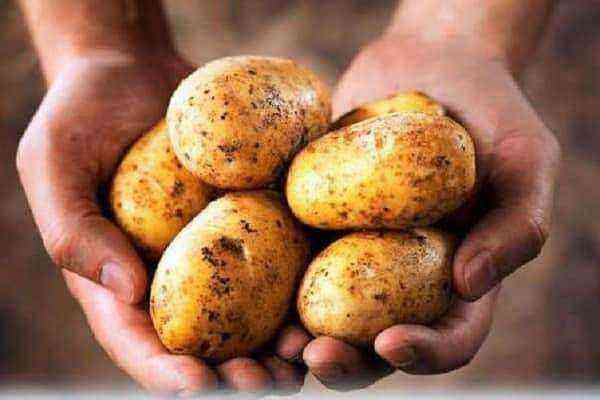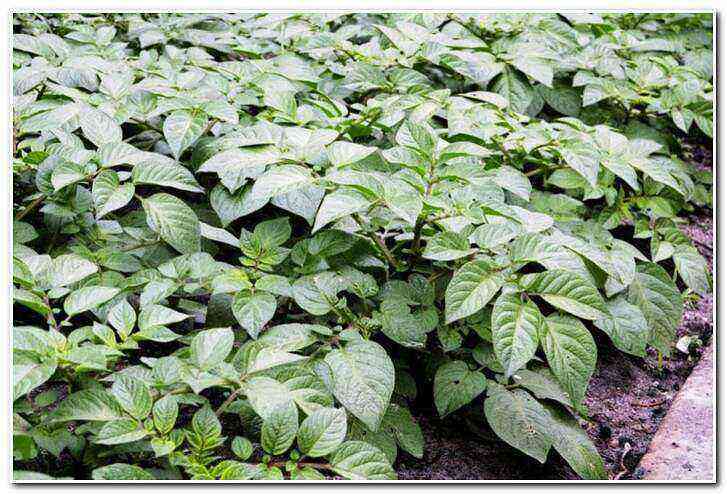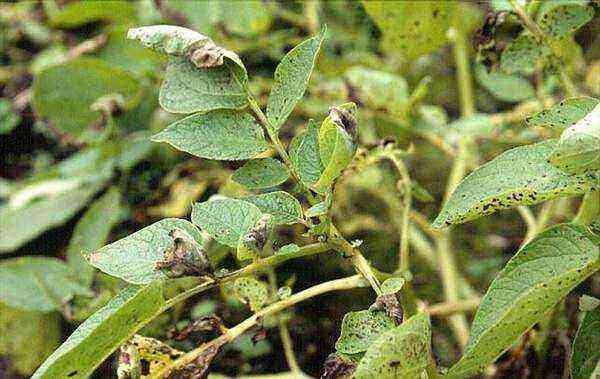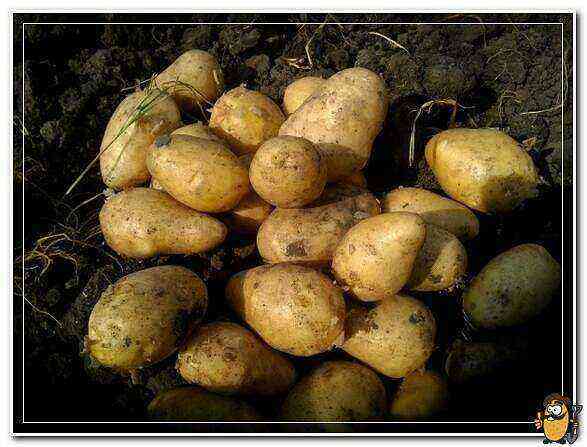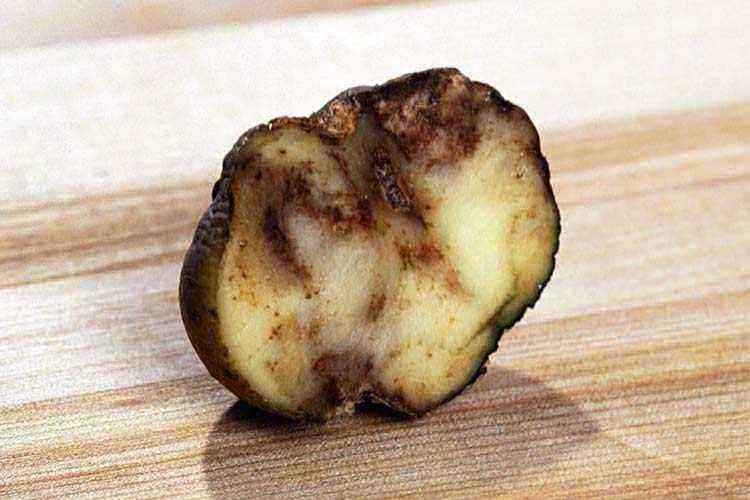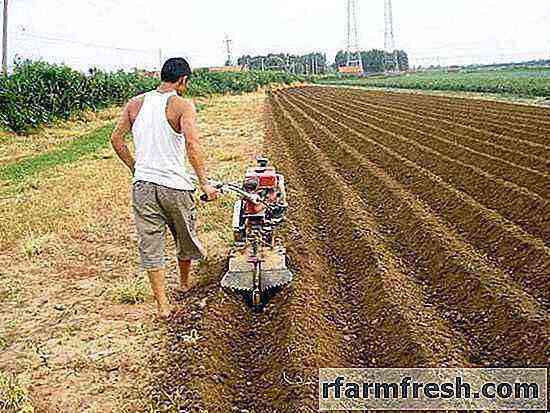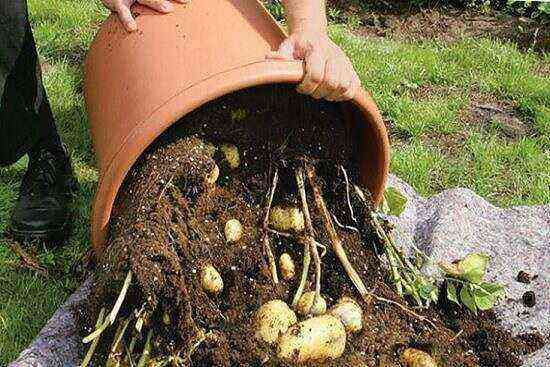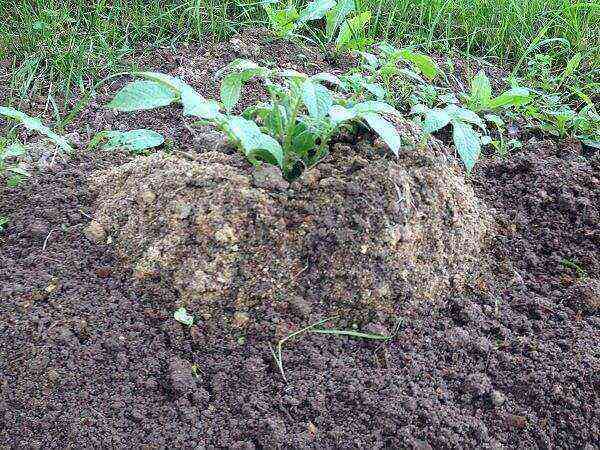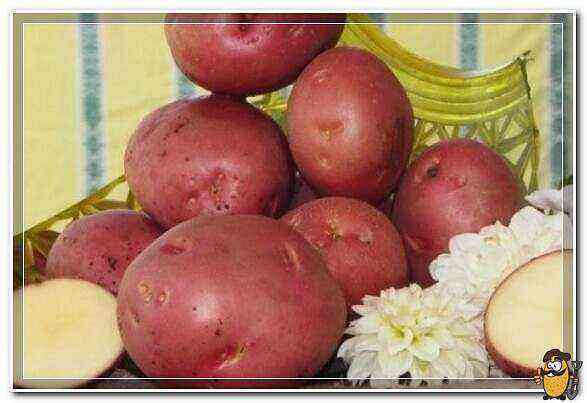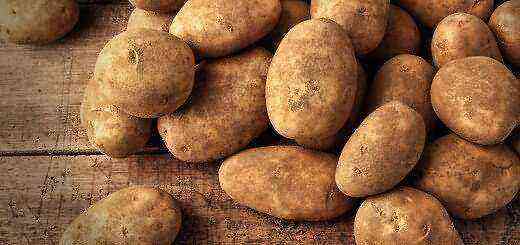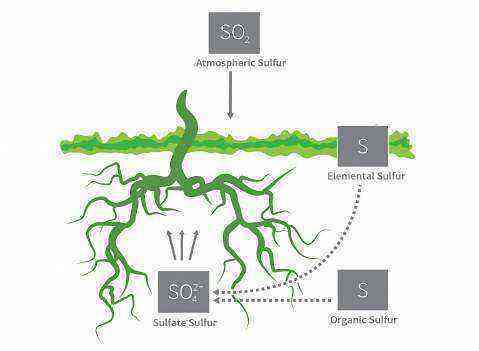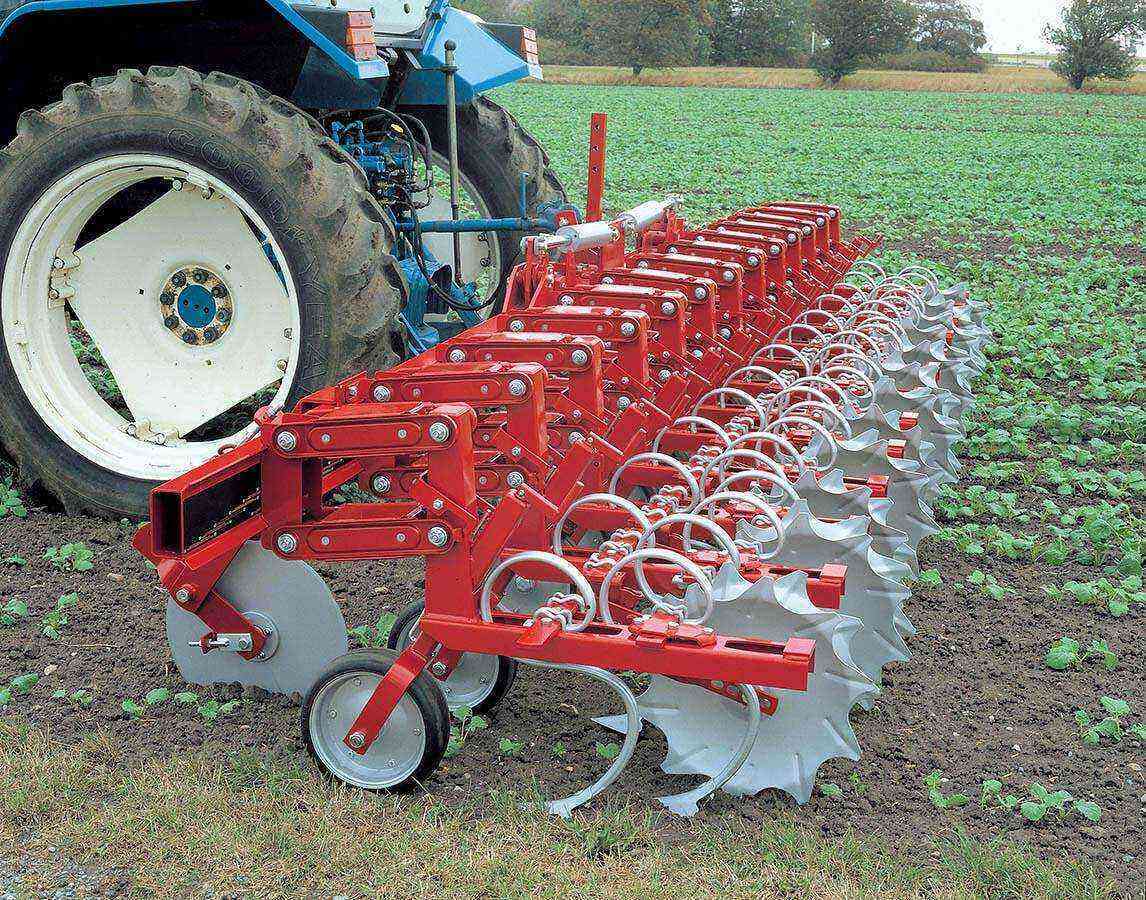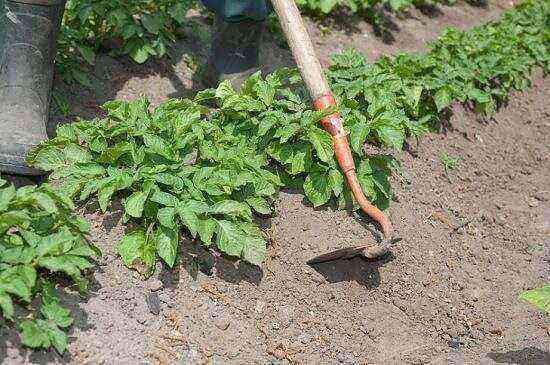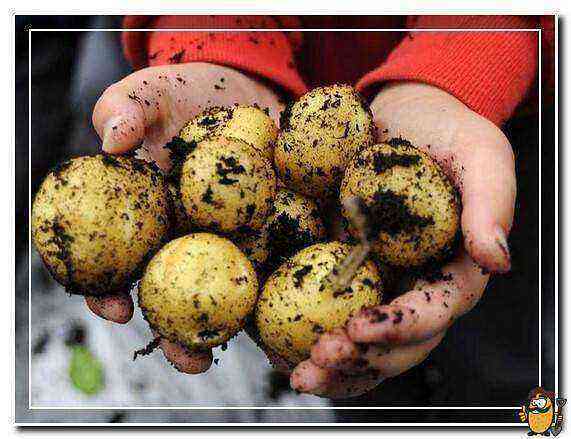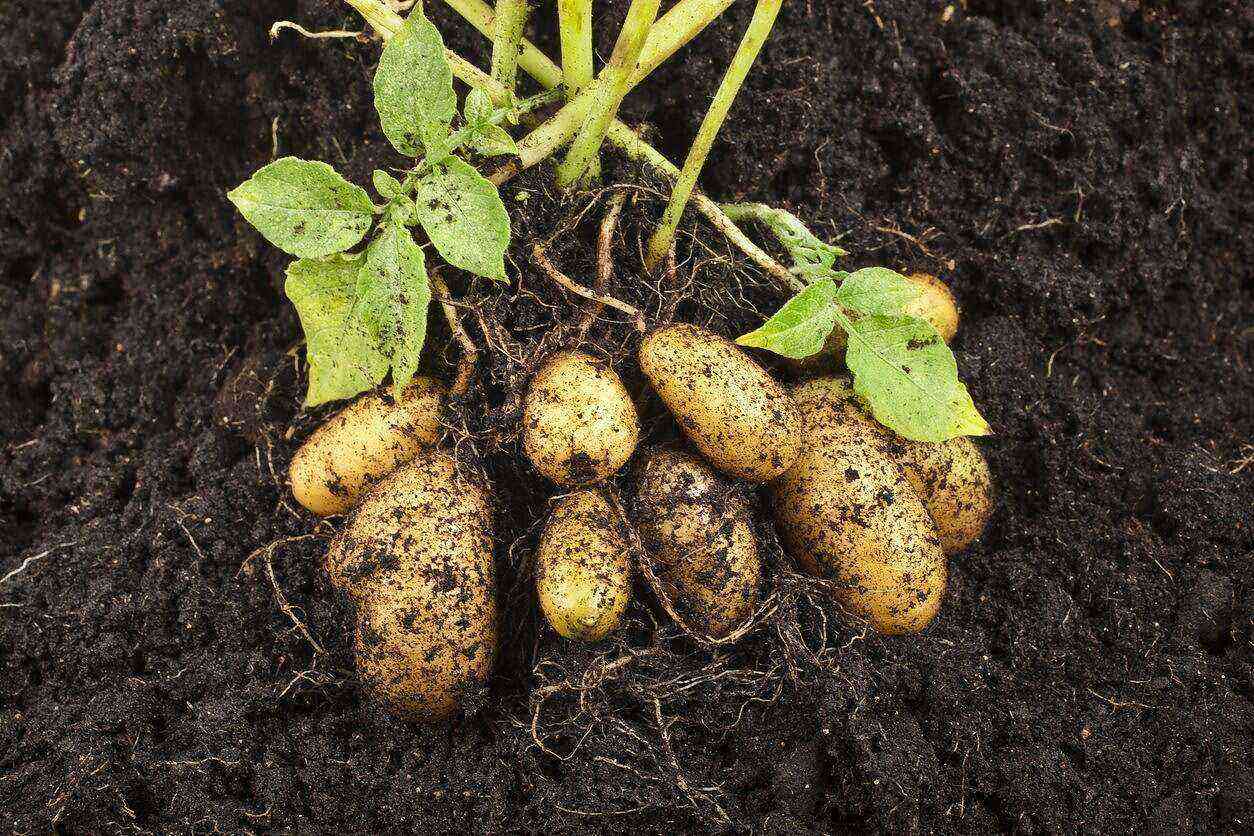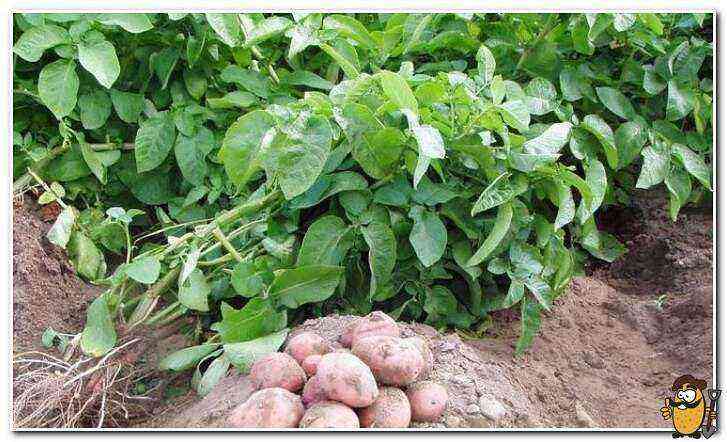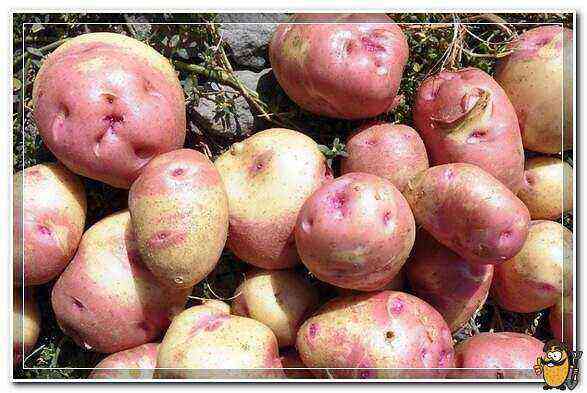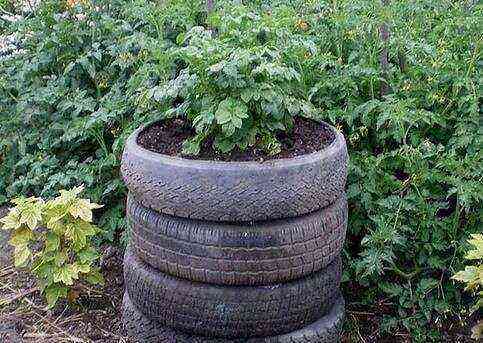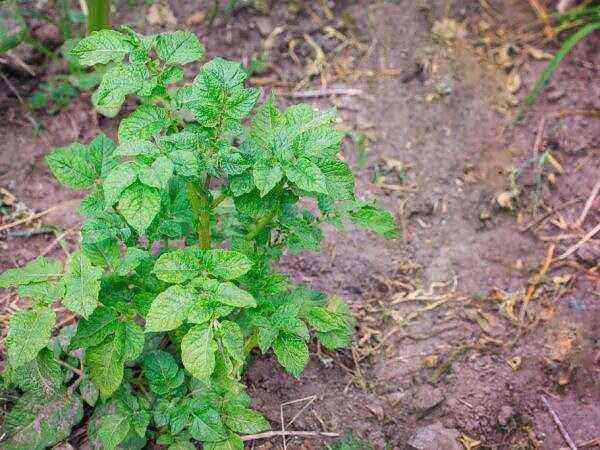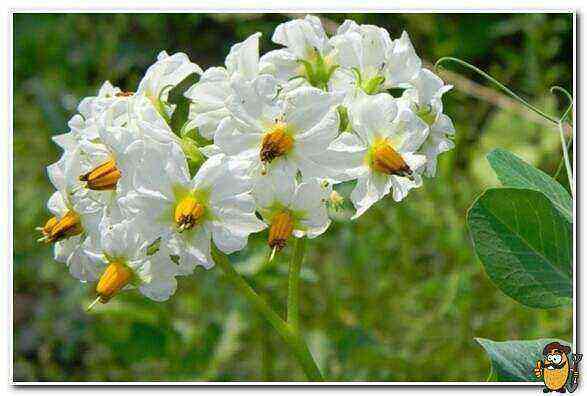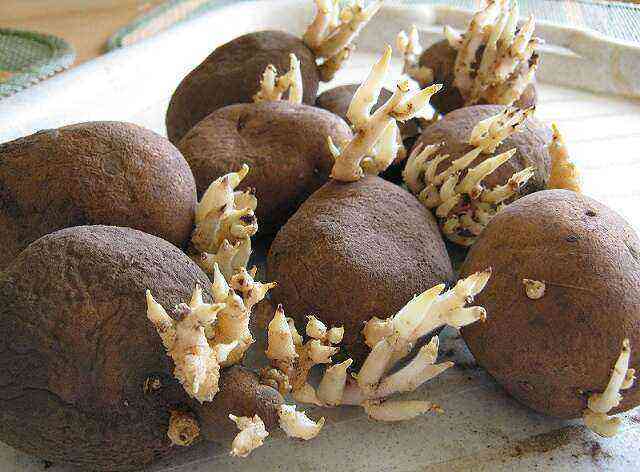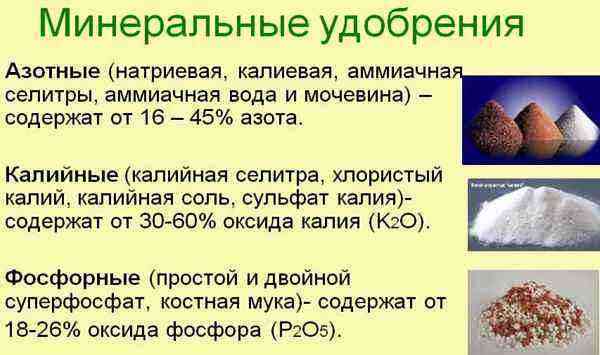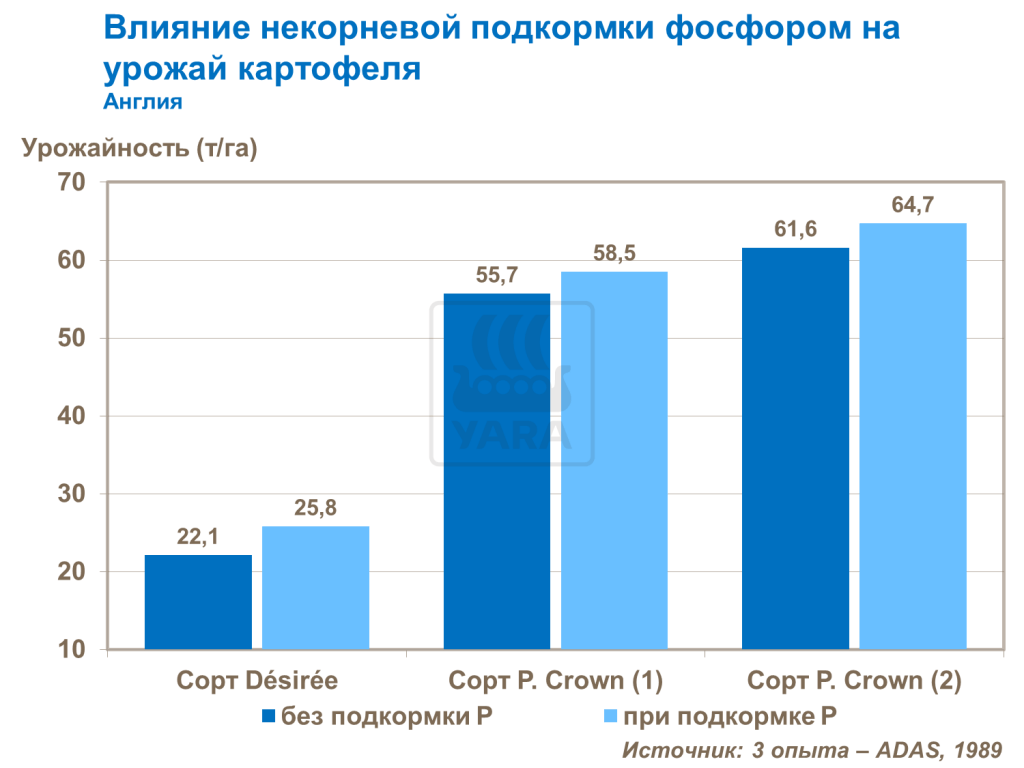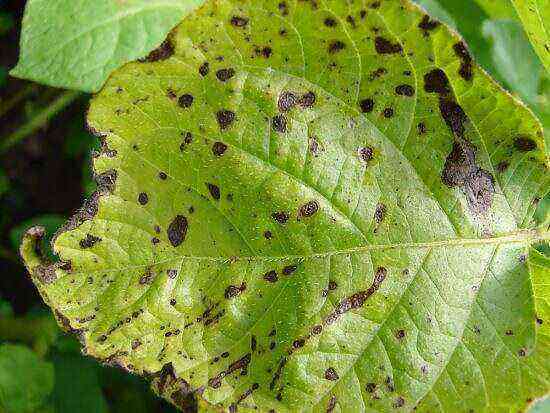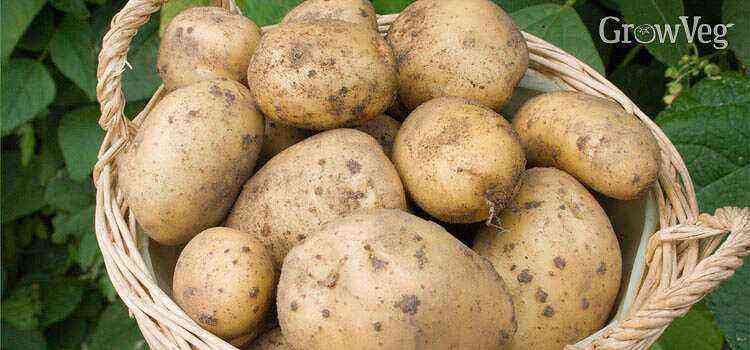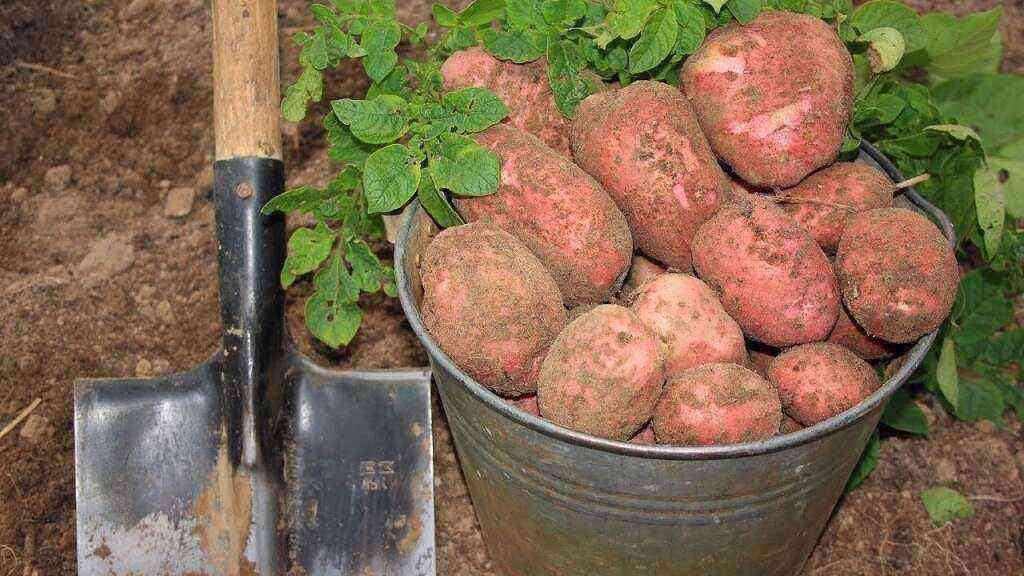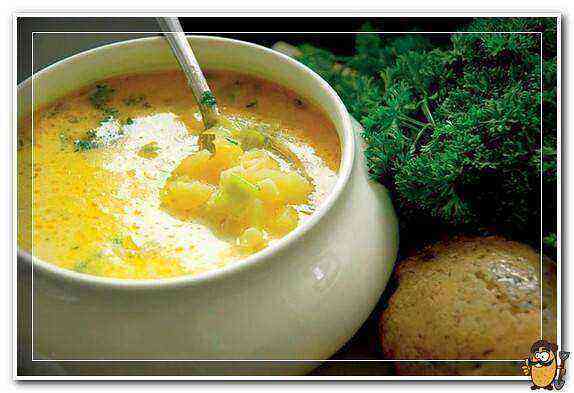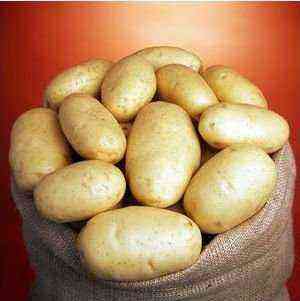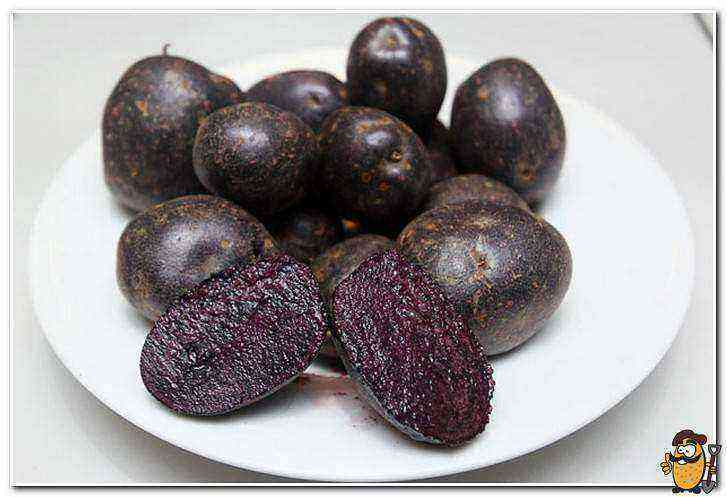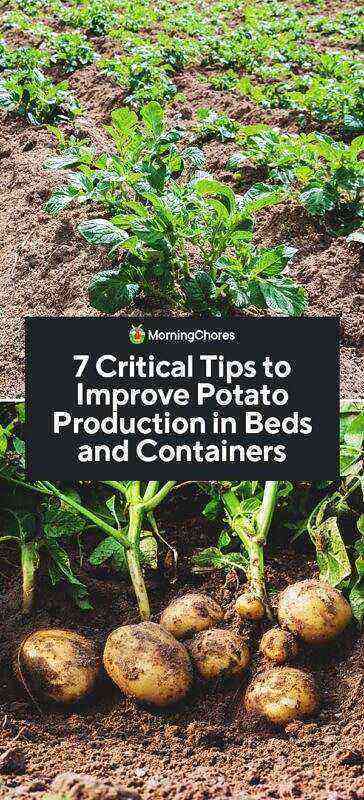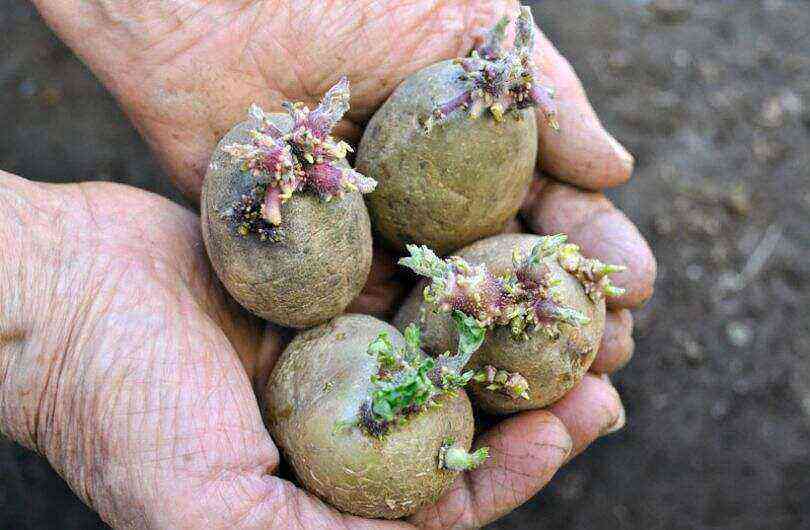1. General provisions
These guidelines determine the procedure for identifying foci of bacterial ring rot of potatoes and the conditions for their localization and elimination. The causative agent of the disease is the bacterium Clavibacter michiganensis subsp. sepedonicum (Spieckermann and Kotthoff) Davis et al. – included in the List of quarantine species of the European and Mediterranean Organization for Quarantine and Plant Protection (EPPO) and in the List of pests, plant diseases and weeds that are quarantine objects for the Republic of Belarus.
Ring rot of potatoes is a disease caused by the bacterium C. michiganensis subsp. sepedonicum (Cms) is a dangerous quarantine object. The disease is promoted by elevated temperatures and high soil moisture. Ring rot is extremely harmful. Heavily infested tubers usually rot without sprouting; weakly affected plants, as a result of their general oppression, form significantly fewer tubers. Yield losses from ring rot in some years can reach 45%.
The disease manifests itself in stem and tuberous forms. The most characteristic signs of the disease on the bushes appear towards the end of flowering: on individual stems, leaf slices gradually turn yellow and fade, the stems slowly fade and fall to the soil. The whole bush gradually fades and falls apart. In contrast to the defeat by the black leg, the base of the stems is not soaked, and they are more difficult to pull out of the soil. In years with humid and cool weather, the disease can occur in a latent form. On tubers, depending on the pathways of infection, ring rot manifests itself as a lesion of the vascular ring and pitted rot (yellow subcutaneous spot). When bacteria enter the tubers through the stolons, the vascular system softens and, when pressed, a light yellow mass is released from the affected vessels. Outwardly diseased tubers do not differ from healthy ones. Over time, during storage, the disease covers the nearby tissues and the core of the tuber with the development of wet rot, while the tissues are completely destroyed, turning into a white, viscous, unpleasantly smelling mass. Pit rot occurs when bacteria penetrate through a wounded peel in the autumn, but is found only in late March – early April in the form of rounded spots of cream or light yellow color under the peel. The flesh of the tuber in the spots of the spots rots out with the formation of pits. When such tubers are planted, underdeveloped plants with swollen stems grow. The leaves of such plants are located close to each other (especially at the top). Affected plants wither and dry out, tuberization is absent. This type of ring rot lesion is called dwarfism.
The pathogen overwinters in diseased tubers. It does not overwinter in the soil, but it can persist in unharvested plant debris and tubers. The disease is transmitted with infected seed material (tubers must not be cut), insects, as well as through agricultural implements and agricultural machines when they come into contact with infected potato tubers and plants, containers, while planting maintenance (inter-row cultivation, removal of tops, etc.) …
2. Identification of foci of bacterial ring rot
2.1. Diagnostics
To identify the phytopathogenic bacterium Clavibacter michiganensis subsp. sepedonicum should involve at least two diagnostic methods, using enzyme-linked immunosorbent assay (ELISA), immunofluorescence method (IF), polymerase chain reaction (PCR), etc. It is mandatory to include positive and negative controls in the tests. When inspecting regulated products at checkpoints across the state border of the Republic of Belarus, one of the above diagnostic methods is sufficient to identify a quarantine object.
2.2. Measures to identify foci
The subjects of the survey are primarily subjects of original and elite potato seed production – research institutes, experimental agricultural stations, agricultural enterprises, variety testing stations and variety plots for potatoes, imported potato crops. Sampling for the purpose of detecting bacterial ring rot of potatoes is carried out by methods of tuber analysis and examination of crops during the growing season. Due to the fact that the probability of detecting ring rot during the growing season is extremely low, it is preferable to diagnose this disease on tubers.
Inspections of seed potatoes stored in storages, piles are carried out based on the visual phytosanitary state of a particular variety with an annual mandatory subsequent analysis of samples taken by inspectors. Before sending samples for analysis, the inspector establishes a ban on the sale and planting of seed until the results of the quarantine examination are received.
2.3. Quarantine phytosanitary zone (focus of infection)
A phytosanitary quarantine zone or a hotbed of infection is an area where quarantine objects have been identified, a quarantine regime has been established and measures are taken to combat quarantine objects, to localize and eliminate their foci. When bacterial ring rot is detected in the crop rotation fields of agricultural organizations of all forms of ownership, the area of the field where this disease is detected should be considered as a quarantine phytosanitary zone.
When bacterial ring rot is detected in household plots, the area of the entire household plot is considered as a quarantine phytosanitary zone.
If bacterial ring rot is detected in storage facilities, the entire storage should be considered a quarantine phytosanitary zone. If this disease is detected in the places of harvesting, storage of potatoes (piles), the area of the infected pile should be considered as a quarantine phytosanitary zone.
3. Imposition of quarantine restrictions
The imposition of quarantine restrictions on a quarantine phytosanitary zone is carried out in accordance with the “Regulations on the procedure for determining and marking the boundaries of a quarantine phytosanitary zone, imposing and lifting plant quarantine, establishing a quarantine regime.”
4. Measures to eliminate foci of bacterial ring rot
4.1. Mandatory quarantine measures in the quarantine phytosanitary zone
4.1.1. If bacterial ring rot is detected in the crop rotation fields of agricultural organizations of all forms of ownership, it is prohibited on the personal plots of citizens: – the use of contaminated potatoes for seed and food purposes; – sale of contaminated potatoes in wholesale and retail trade; – sale of contaminated seed and ware potatoes outside the economy, district, region, as well as the republic; – Infected potatoes must be taken out for industrial processing, subject to the measures for the chemical treatment of loading and transport vehicles, containers, work equipment, etc. In this case, it is necessary to observe measures for its separate storage before exporting it for industrial processing; – cultivation of potatoes in the infested area for three years; – the presence of self-seeding potatoes.
4.1.2. In case of detection of bacterial ring rot in the storages, the following quarantine measures are carried out: – the use of infected potatoes for seed and food purposes is prohibited; – it is prohibited to sell infected potatoes in wholesale and retail trade; – it is prohibited to sell infected seed and ware potatoes outside the economy, district, region, and also the republic; – cutting tubers is prohibited; – it is prohibited to store infected potatoes in the same room (storage) with uninfected ones; – within 14 days from the date of imposition of quarantine restrictions, the infected potatoes are subject to export for industrial processing, subject to the measures for the chemical treatment of loading and transport vehicles, containers, working equipment, etc .; – after the removal of infected potatoes, potato storage (floors, walls), as well as containers, containers, agricultural vehicles moving around the storage, etc. subject to cleaning and chemical treatment (partial processing); – in addition, cleaning and chemical treatment of the entire storage facility is carried out once a year: in the spring after release or in the fall before storing the potatoes; – there must be a disinfecting pillow at the exit and entrance to the storage facility.
4.1.3. If bacterial ring rot is detected in the places of harvesting, storage of potatoes (piles), the following quarantine measures are carried out: – the use of infected potatoes for seed and food purposes is prohibited; – it is prohibited to sell infected potatoes in wholesale and retail trade; – it is prohibited to sell infected seed and ware potatoes outside the economy, district, region, and also the republic; – cutting tubers is prohibited; – Infected potatoes must be taken out for industrial processing, subject to the measures for the chemical treatment of loading and transport vehicles, containers, work equipment, etc. At the same time, it is necessary to observe measures for its separate storage before exporting it for industrial processing; – in the places of harvesting, storage of potatoes (piles), straw, plant residues and tubers are removed and burned, and the soil is plowed to a depth of 25-30 cm and disinfected with a 5% solution of copper sulfate; – observance of the spatial isolation of the burtpole from potato storage at least 100 meters; – it is prohibited to lay burtfields in the same place for three years.
5. Recommended preventive measures to prevent infection with ring rot of potatoes in farms where there are no foci of the disease
In order to prevent infection and spread of ring rot of potatoes in farms where the disease has not been detected, it is necessary to observe a set of preventive phytosanitary measures: – chemical treatment of storages once a year: in the spring after the storage is vacated or in the fall before laying potatoes for storage with the preparation of an appropriate act on all types of chemical treatment; – the presence of a disinfecting pillow at the exit and entrance to the storage facility; – laying collars in the same place for no more than three years; – observance of the spatial isolation of pile fields from potato storages at least 100 meters; – the disposal of rejected potatoes after their bulkhead is carried out by burning or burying in the ground within the unsuccessful pile to a depth of at least 1 m; – cutting tubers is prohibited.
6. Chemical measures to eliminate foci of ring rot
For chemical treatment, only approved chemicals are used in accordance with the instructions for their use. For processing, you can use a 2-3% solution of copper sulfate or a solution of bleach containing 2-3% of active chlorine (the chlorine active agent is not recommended for treating vehicle surfaces painted with oil paint), 2% aqueous formalin solution, 1-2% working solution isar, 10% w.r.c. with an exposure period of 20-30 minutes.
In order to process the wheels of road transport at the entrance to the territory of the potato storage, a disinfecting barrier is equipped with a disinfecting solution mirror length of at least 9-10 m and a width of 6 m, which is filled to a depth of 20-30 cm with a disinfecting solution (possibly 5% chlorine solution). After passing the vehicle through the disinfection barrier, it is kept on the sludge site for at least 20-30 minutes.
Potato storages in which infected potatoes were stored (floors, walls, containers, agricultural machines and other equipment) must be cleaned and processed with 2-3% copper sulfate solution or 2% bleach solution (1 liter per 100-200 m2). The room for treatment with chemical agents is prepared in compliance with safety regulations and technology for their use.
It is equally important to whitewash the inner surfaces of the storage cleared of debris and residues of tubers with a solution of freshly slaked lime with the addition of copper sulfate (2-3 kg of lime and 200-300 g of copper sulfate per 10 liters of water at a consumption of 0,5 liters of working solution per 1 m2), after which the premises must be dried. To treat shoes when leaving the store, where a batch of infected potatoes has been identified, mats filled with foam rubber, sawdust or other porous elastic material are installed, which are periodically saturated with a chemical solution. The surface layer of the soil in the places where the infected potatoes are lumped is disinfected with a 5% solution of copper sulfate. Agricultural machinery and soil cultivation implements after working on household plots of citizens infected with ring rot pathogens, contaminated crop rotation fields should be thoroughly cleaned of soil and plant residues, followed by rinsing them with water under pressure on a specially designated area for these purposes, which has a drain for drainage water, and treated with chemicals. When preparing and using working solutions of chemical agents, it is necessary to strictly observe personal safety measures, environmental protection and fire-fighting measures. Chemical treatment of the entire storage facility is carried out once a year: in the spring after release or in the fall before storing the potatoes. In addition, its partial processing is carried out at any time of the year as soon as the storage facility is freed from infected potatoes (after it has been taken out for industrial processing).
For all types of work on chemical treatment in farms of all forms of ownership, appropriate acts must be drawn up without fail. Acts are drawn up in organizations of all forms of ownership, on the territory of which these types of work were carried out, with the participation of authorized persons to carry out chemical treatment (the form of the act is attached) (Appendix 1).
7. Duration of quarantine restrictions
Quarantine restrictions on bacterial ring rot are imposed for a period of 3 years. If during this period the disease is not detected again, the focus must be removed from the quarantine regime.
The heads of business entities are responsible for compliance with quarantine measures for the localization and elimination of bacterial ring rot of potatoes. For violation of quarantine rules and for evasion from their implementation, the perpetrators are brought to justice in the manner prescribed by the current legislation.
If there is a focus of potato ring rot on the territory of a potato seed-growing entity and in case of violation of the quarantine measures provided for in sections 4 and 6 of these guidelines, or evasion from their full implementation, the potato seed-growing entity is excluded in the prescribed manner from the State Register of Producers, Procurers of Seeds … In the event of the expiration of the validity period of a special permit (passport) for the right to produce, harvest and sell potato seeds, re-registration of potato seed-growing entities that are unfavorable for bacterial ring rot, regardless of ownership and departmental affiliation, in the State Register of Producers, Procurers of Seeds is allowed with strict implementation of quarantine activities in accordance with sections 4 and 6 of these guidelines. If the potato seed-growing entity fails to fulfill one of the points of the above sections, re-registration in the State Register of producers, seed purveyors is not allowed.
If there is a focus of ring rot on the territory of a potato seed-growing entity and during the period of validity of quarantine restrictions, the sale of potato batches by seed-growing entities included in the State Register of producers, procurers of seeds from zones (crop rotation fields, storages, piles), which are not subject to quarantine restrictions, allowed outside the economy, district, region according to the conclusion in the act of tuber analysis or test report issued by the specialists of the inspection for seed production and plant protection.
